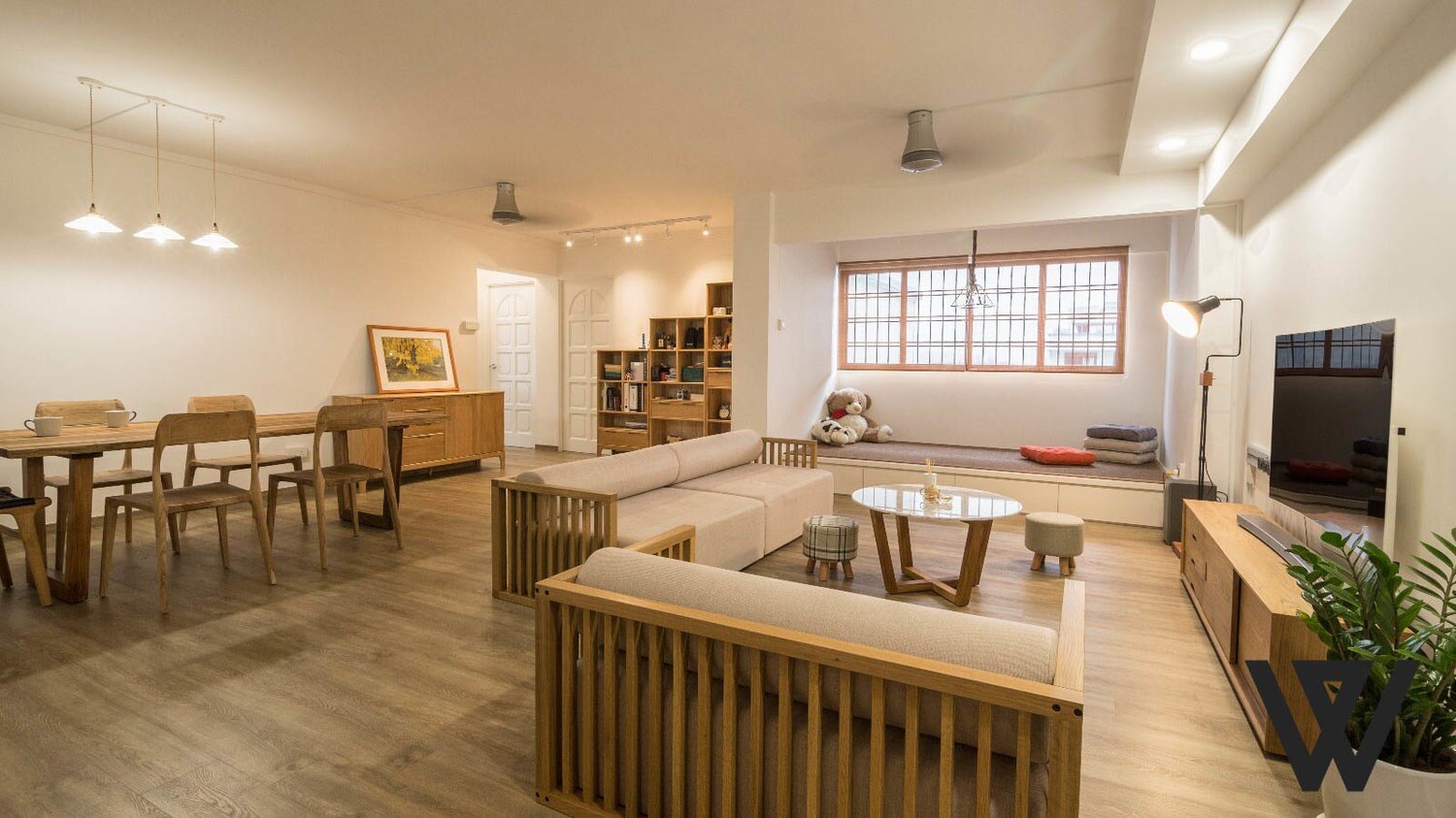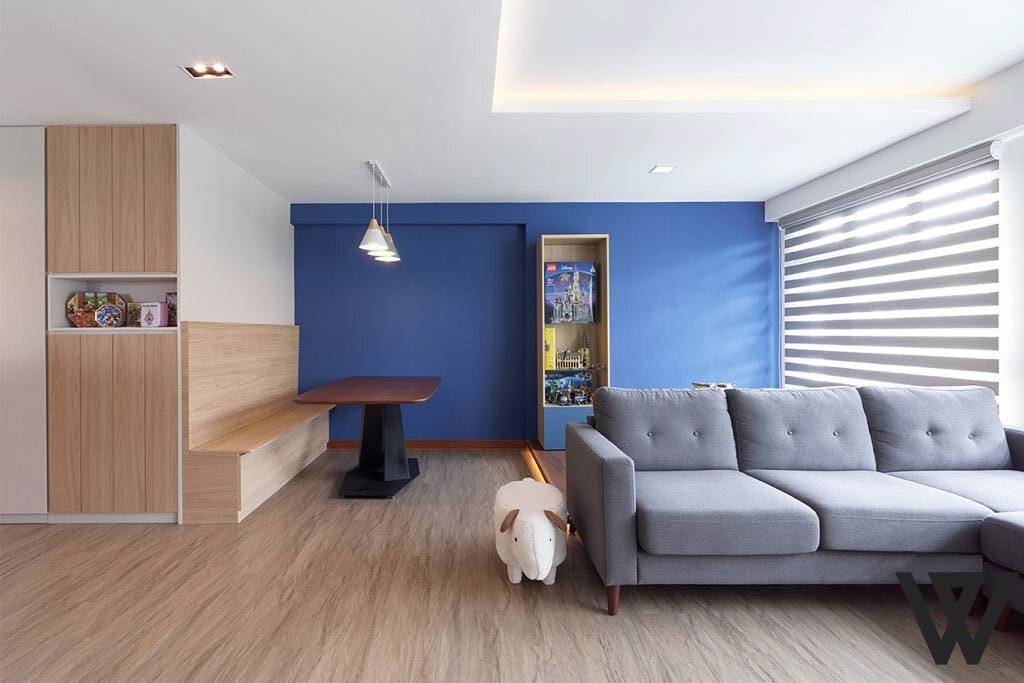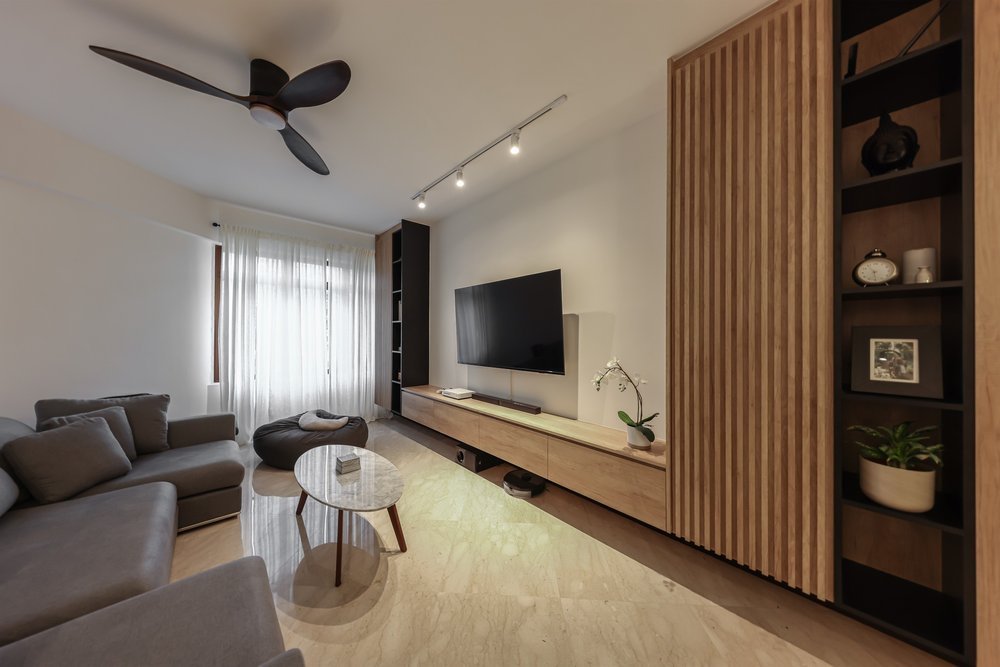Finding Harmony With the Secrets of Zen Interior Design
The Zen philosophy has always carried a bit of mysticism and wisdom. In the past decade, more designers and homeowners have started using Zen ideas in interior design projects. Now, it's evident that Zen can help many families find peace and relaxation after a long day of work.
Perhaps, creating an environment that corresponds with your mindset is something many fear to try. Still, the Zen interior design is capable of going way beyond the aesthetic aim. The style takes direct inspiration from nature, aiming at creating a practical and cosy environment.
As a result, Zen-style interior design is the quintessential choice for small homes like HDB flats and Condos.
What is Zen Interior Design?
As you may know, Zen stems from Buddhism, which has a massive impact on most Asian cultures. Therefore, it's safe to say that both teachings have a lot in common. Ultimately, Zen embraces the concept of leading a balanced lifestyle that's harmonious with nature.
As for the Zen interior design style, everything translates into open and practical spaces that create a calming environment.
Top 7 Key Elements of Zen Style Interior Design
If you've heard about Minimalist interior design or Scandinavian interior design, then you'll probably find lots of Zen inspiration. In a sense, all three styles have very similar concepts. Still, some specific elements of the modern Zen interior design help you achieve the atmosphere. Here are the 7 aspects of every Zen-style interior design:
Creating a Clutter-Free Environment
Blk 954 Hougang Ave 9 5 Room HDB Resale
One of the key features of every Zen style design is restraint and omission. In other words, you'd want to keep what you only need. The aim is to achieve a sense of clarity while retaining sync with the world. Implement electronics wisely and do your best to create a serene atmosphere.
Of course, that doesn't mean you should leave your open plan concept entirely empty. You can still have your dedicated TV, dining and rest areas. Just make sure you get rid of anything that you won't need. That way, you'll ensure you're not over cluttering your space.
Stick to the simplicity in your design
After you cut down the distractions to a minimum, you'll make enough room for what matters. Zen interior style embraces the idea of keeping it straightforward but stylish. This means that you should restrain yourself from creating an overly decorative and overstated interior. As a result, your HDB will look fresh and clean.
Incorporating Natural Elements
Another critical element that stems from the Japanese Zen interior design is the touch of nature. The idea here is to achieve a "living" atmosphere by recreating the abstract natural world. The easiest way to do it is to implement patterns and concepts that have to do with these sensations.
For example, you can mix illumination and plants to create a filter. Moreover, you can experiment with your window treatments to play with the sun and shadows. The result may not always give you the best brightness capabilities, but it will undoubtedly achieve the Zen ambience.
Maintain an understated look
A cardinal principle of Zen is to maintain subtlety. This applies to modern Zen interior design in full effect. After all, the power of giving off hints is often stronger than full disclosure. In other words, it's a good idea to leave something to the imagination as curiosity will add an element of interest. Simply limit the fancy decoration and use a piece or two to awaken the creativity of the viewer.
Embracing asymmetry
Surprisingly, one of the peculiarities of the Zen style interior design is asymmetry. The sense of imperfection will exude the symmetry of the natural world. The aim is to make the guests "find" the missing particles of the environment for themselves.
Sometimes, the best way to keep the interest is to leave the story incomplete. In such cases, you are free to leave combinations unfinished. That way, you'll provide viewers with a platform for co-creation.
Leave Room for Imagination
Teck Ghee Parkview, Ang Mo Kio Street 44 5 Room, BTO
While some modern Zen interior design projects may not restrain from contemporary elements, you don't have to try hard. As already noted, leaving some aspects of the interest will make the interior more unique, especially when going for Zen.
A simple interruptive "break" in your living room or open concept design will work as a creative breakthrough. An easy way to do this is to mix different shades of colour to break up your home's monotony. You can safely experiment with hues to achieve the desired mood.
Ultimately, your Zen interior style will leave room for the viewer to contemplate.
Creating a Tranquil Space
Perhaps, the idea of creating a calm and serene environment persists in all minimalist designs. Still, the Zen principle aims at establishing a different type of peaceful tranquillity. There, the homeowner can have a high-quality rest after a long day of work.
In a sense, the modern Zen interior design's solitude comes from the mix of nature and a neat look.
The use of monochromatic and natural patterns here is a must-have. Also, don't forget to apply ideas from Japanese Zen interior design. The use of dark and bright wood tones will create a contrast and further increase the cosy vibes. You can even step it up a notch by implementing some bamboo dividers or window treatments.
Zen colors
Zen interiors are defined by comfort and relaxation which are its hallmarks. The main idea of incorporating zen principles in interior design is to create harmony and balance among all the elements. Colors play an important role in creating an elegant and relaxing space. Light and cool shades like beige, white, and grays are synonymous with freshness and airiness.
Another aspect of choosing the right colors in a zen interior focuses on selecting natural colors like the warm coastal sand and cool evening sky. Focus on halftones with several shades of a particular color to bring about depth and character in the interior.
The following interior portfolio is a clear depiction of a zen style design where you immediately get a very cozy and relaxed feel. Notice how the shades of natural colors like beige, gray, and cream blend together in harmony to create a stylish yet cozy abode.
Texture in Zen interiors
Just as colors are an important element of resonating a particular type of vibe in interior design, textures also play just as significant a role. Keeping in view the Zen theme, opt for those fabrics and textures that have a natural feel to them. When choosing upholstery materials, opt for natural materials like cotton, silk, and wool. Wool and fur textures help create a calm and cozy feel whereas silk drapes and cushions bring about elegance and a royal feel. Moreover, to create the perfect harmony among all elements in a room, balance the colors and textures so that they complement each other.
For example, you can choose soft and light hues and create depth in appearance by choosing varying textures. You can even choose darker hues of the same color in some of the elements. The transition from these light and dark hues along with the change in textures can create a magical and serene environment.
This is exactly what has been done in the following design by Swiss Interior. Here, we can see silk flowing drapes in a soft color, cotton bed linen with silk comforter, and a furry chair and cushion. All these soft hues and natural textures create the perfect balance and harmony that is the essence of a Zen-inspired interior.
Lighting
Good lighting is another significant element of a true Zen design. In such a design, there should be enough light in the room to create a bright and airy space; however, it should never be too dazzling or harsh so as to become a sore for the eyes. Soothing and calming lights are extremely important for creating a relaxed environment. Therefore, you should ensure that there is plenty of natural light flowing in through the windows but light, sheer drapes should be used in front of the windows to diffuse the light. The aim is to create a soft light effect while still keeping the room appropriately lit up.
Moreover, at night time, the lighting should be subdued. This can be achieved in the form of indirect lighting, lamps, and sconces. These lighting options not only create a calm and soothing environment, but also give a modern and trendy touch to the interior.
In the following example of a design by Swiss Interior, we can see huge windows that allow lots of natural light to flow in but the thick curtains allow to subdue the light when needed. Warm ceiling lights help create a dramatic yet serene atmosphere.
Decorative elements
A Zen inspired interior design embodies the manifestation of your inner world. Therefore, it should radiate calmness and comfort. Think of all the things that give you a sense of comfort and serenity. It could be anything ranging from family photographs, precious heirlooms, souvenirs from your foreign trips, or traditional artifacts. Display them in the rooms so you can always recall all the good memories associated with them.
Furthermore, you should aim to decorate your home made from natural materials to bring about the Zen essence in the space. Add green plants and flowers to bring that earthly element into the space. Embrace hardwood floors and add a small water fountain where the water dripping would create heavenly music for the soul. Use furniture with wooden textures and shades to feel the connection with your roots. In the end, enhance the room’s appearance through the intelligent use of modern lighting to create a comfortable yet stylish living space.
The following design portfolio by Swiss Interior makes use of this technique where decorative items are used in accordance with Zen principles. A large wall hanging and decorative artifacts add a nostalgic touch whereas the green plants and natural color tones add the touch of serenity. All in all, it is a living area where you can relax and leave all your worries behind!
Asian-inspired furniture
The Zen philosophy has its roots in traditional Chinese, Japanese, and Buddha cultures. Therefore, it is only natural that using asian-inspired furniture can be considered a key element to achieve that look and feel in any interior. Such furniture tends to be minimalist and is usually made from dark woods. Lighter wood in the form of bamboo furniture is also used. These wooden textures and colors create the perfect balance with the subdued color palette.
Moreover, asian-inspired furniture is simple and functional. Hence, often you see storage areas hidden in the furniture items, built-in shelves, and other furniture pieces that double into storage areas. Such furniture helps create a decluttered space to give the eyes plenty of white space to rest upon; hence creating a calm and serene atmosphere.
In the following design by Swiss Interior, we can see bamboo chairs and lots of plants with hardwood floors. Natural sunlight basks the interior of the room to give a fresh and soothing appeal.
Apply the principles of Feng Shui
One more way through which you can create a Zen interior is to apply the principles of Feng Shui in your home. Feng Shui is an ancient Chinese philosophy that aims at creating such a space where positive energy, chi, flows through. Increased positive energy in your homes, according to beliefs, helps in positively affecting a person’s private and professional life, relationships, and success.
The following tips can help incorporate Feng Shui principles in your interior to create a calm and comfortable abode:
● Create a focal point in the room and place the largest furniture item at that point. Arrange all other elements around the focal point in some form of symmetry.
● Add plants so as their positive energy bounces through every corner of the room.
● Brighten up the corners in every room through lamps or spotlights so as to get the illusion of light flowing in through the corners into the center of the room.
● Use furniture with rounded corners and avoid elements that are too pointy.
● Create minimalist bedrooms, bathrooms, and the kitchen since they are considered the trinity of nature. The more clean and uncluttered they are, the more space there will be for the positive energies to flow.
What is a Zen-style room?
A Zen-style room focuses mainly on manifesting a comfortable and calm ambience. This is achieved by using natural soft colors and textures in the design. Furthermore, subdued natural and artificial lighting play a major role in achieving a relaxing atmosphere for the room. Use lamps and indirect lighting for this purpose. Also, create a mindful atmosphere where multiple senses are invoked through scented candles and soft textured furniture.
What are the five elements of Zen?
The five elements of Zen are Earth, Fire, Water, Wood, and Metal. According to Zen philosophy, all these elements work in harmony to balance the energies in any space. Earth element is associated with yellow and other earthly colors, stones, pebbles, and clay materials. Fire is depicted through shades of red and triangular shapes. The essence of the water element can be achieved through unusual shapes, black and gray colors, and mirrors. Wood is depicted through plants, trees, and various shades of green. Lastly, the metal element creates a sense of beauty and is depicted through white, gold, and silver shades.
What are good Zen colors?
Any color which gives you a calm and soothing effect can be considered a Zen color. However, some shades are typically associated with a Zen-inspired interior including, beige, cream, offwhite, gray, lilac, teal blue, ice blue, khaki green, baby pink, soft browns, and shades of black.
What is Zen architecture design?
Zen design is defined by a relaxing and minimalist space where everything is visually balanced in harmony and tranquility. A Zen architecture design, therefore, is minimalistic, uses natural materials, creates simple and clean spaces with minimum clutter, ensures that the rooms are lit up through subdued natural and artificial lights.
Final Thoughts
More people have started looking for ways to make their homes calm and relaxing in the past decade. The strain from the everyday commitments indeed accumulates a lot of stress. Luckily, Zen-style interior design will make your 4-room HDB or Condo a safe haven after a long day of work.
While it's often easy to distinguish, Zen interior design will readily influence any interior style. This is especially true for designs with similar philosophies. Its signature feature has to be the elements from Japanese culture as well as the overall asymmetry.
If you love understated looks that leave a lot to the imagination, this style will perfectly fit your personality.
Swiss Interior is one of the top interior designers in Singapore. If you are looking for similar ideas for your condo interior design, you can find out more about our work from our design portfolio. We provide renovation services, HDB interior design services and renovation packages as well.









